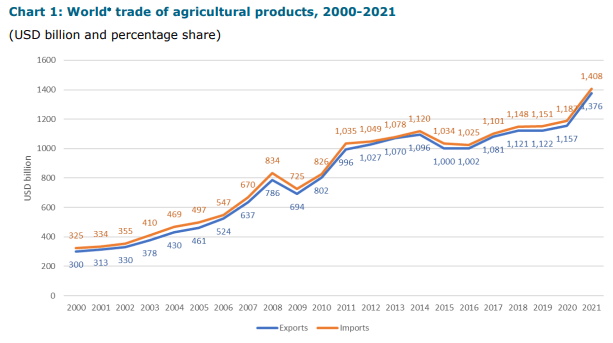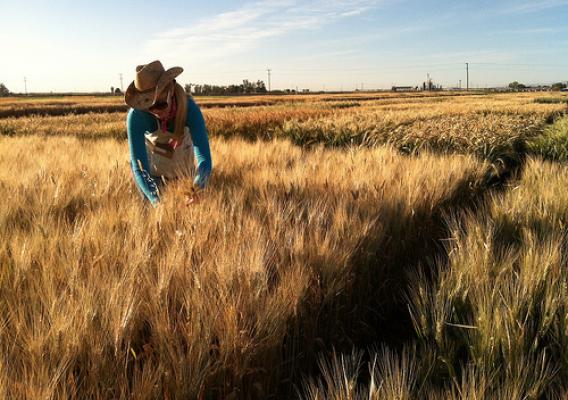World exports of agricultural products nearly quintupled between 2000 and 2021, from $300 billion in 2000 to $1.376 trillion in 2021.
According to World Trade Organization (WTO) data, this constitutes an average annual growth rate of 7.5 percent.
Conversely, world imports increased from $325 billion to $1 trillion $408 billion over the same period, reflecting an annual growth rate of 7.2 percent.

The share of agricultural products in total merchandise exports increased from 6.1 percent in 2000 to 7.8 percent in 2021, and the share of imports from 6.2 percent to 7.8 percent.
The lowest share was reached in 2006, but then increased steadily after the food price crisis of 2007-2008.
In contrast, the peak was reached in the first year of the pandemic, 2020, with shares of 8.3 percent for each stream.
While North America accounted for more than a quarter of world exports in 2000, its share fell to 21% in 2021.
Europe’s export share also fell (from 28 to 24 percent).
Among the regions whose share increased were Asia (from 24 to 29 percent), South and Central America (from 14 to 16 percent), the Middle East (from 1.7 to 2.2 percent) and the CIS (from 1 to 3 percent).
World exports
Africa’s share remained fairly stable, between 4.3% (2000) and 4.5% (2021).
In turn, agricultural exports from the CIS increased 12-fold between 2000 and 2021 (average annual increase of 13%), while exports from the Middle East and Asia increased almost six-fold in those years.
On the import side, Europe’s share of world imports of agricultural products declined 6 percent between 2000 and 2021 (from 26 percent to 20 percent).
South and Central America’s share declined 1% (from 7 to 6%), the CIS share fell 2%, while Africa’s share remained stable (at 6 percent).
Asia’s share showed distinct growth (from 35 to 40 percent) and so did North America’s (from 16 to 20 percent).

